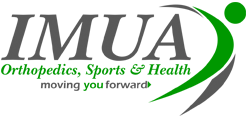Biologics/Plasma Rich Protein (PRP)
Regenerative Orthobiologic Medicine
Regenerative Orthobiologic Medicine
PRP (Platelet RIch Plasma) and stem cell treatments are non-surgical procedures performed in the office, and involve the use of cellular biology to improve treatment outcomes.
What is it?
By utilizing innovative biologic treatments, the biologic growth factor and healing cascades are stimulated, and inflammatory conditions are suppressed, which can help restore function and quality of life nonoperatively.
The goal is to utilize the body’s own natural healing properties to overcome injuries and achieve the highest level of function without surgery.
Who is it for?
Many people, from professional athletes, collegiate athletes, pediatric patients to senior citizens, have benefited from orthobiologic treatments.
The most commonly performed, and the least invasive, is PRP (Platelet Rich Plasma) treatment.
What is PRP?
PRP stands for Platelet Rich Plasma. You can take advantage of the healing power of your own blood to restore joint function and optimize tissue healing, without surgery. Platelets are full of multiple growth factors that aid in wound healing, including platelet-derived growth factor and insulin-like growth factor.
When Dr. Ignacio prepares PRP from your blood, by centrifuging a syringe of your blood to separate the PRP layer, a platelet-concentrated form of plasma is created, which is injected into your joint or the site of your injury. The dense concentration of platelets — about 500% more platelets than normal blood — jumpstarts healing so that your body can quickly repair your injury and restore function.
Make a Regenerative Orthobiologic Medicine Inquiry
Conditions Treated
Frequently Asked Questions
PRP stands for Platelet Rich Plasma. You can take advantage of the healing power of your own blood to restore joint function and optimize tissue healing, without surgery.
Platelets are full of multiple growth factors that aid in wound healing, including platelet-derived growth factor and insulin-like growth factor.
When Dr. Ignacio prepares PRP from your blood, by centrifuging a syringe of your blood to separate the PRP layer, a platelet-concentrated form of plasma is created, which is injected into your joint or the site of your injury. The dense concentration of platelets – about 500% more platelets than normal blood — jumpstarts healing so that your body can quickly repair your injury and restore function.
Even though it’s a cutting-edge and revolutionary therapy, it’s a very simple and straightforward treatment option.
The procedure is performed in the office, and is comprised of a simple blood-draw with a special kit and special syringe.
The syringe is then placed in a centrifuge machine, and then the PRP layer is injected into the joint or area of injury.
Not only is it a same-day procedure, but most patients leave the office within an hour.
For tissue injury, when PRP is injected into the damaged area, it stimulates the tendon or ligament to activate the healing cascade.
The concentration of platelets — and, thereby, the concentration of growth factors — can be 5 to 10 times greater (or richer) than usual.
As a result new collagen begins to form in the injured tissue.
Patients can see a significant improvement in symptoms. This may eliminate the need for more aggressive treatments such as long term medication or surgery, as well as a remarkable return of function.
For arthritis, research studies have shown that PRP therapy, with it’s anti-inflammatory response, improves pain, stiffness, and function, better and longer than cortisone injections and lubricant injections, in both men and women who suffer from osteoarthritis.
Also, in comparison to cortisone injections, studies have shown that multiple cortisone injections, if too frequent or too numerous, may actually weaken tissue and affect cartilage.
Cortisone shots may provide temporary pain relief and stop inflammation, but they do not provide long term effect. PRP is your own natural anti-inflammatory, and lasts longer, especially when a series of PRP injections are utilized, for a cumulative biologic stacking effect.
There is no limit to the number of treatments you can have; however, literature has shown that about 15% of patients do not see improvement with more than a series of three stacked injections, and should consider other treatments such as surgery at that point.
You are restricted from the use of non-steroid anti-inflammatory medications (NSAIDs – which are anti-platelet medications) two weeks prior to the procedure and throughout the course of treatments.
“Active rest”, which means regular, necessary activities of daily living are resumed, but in order to optimize the adherence and activation of the platelets at the site, active exercise for that specific limb where PRP was injected is restricted for 3 weeks.
Initially, the procedure may cause some localized soreness and discomfort. Most patients only require some extra-strength Tylenol to help with the pain. Ice and heat may be applied to the area as needed.
Three weeks after the procedure, patients will typically start a rehabilitation program with physical therapy. However, aggressive physical activity is discouraged.
Since your own blood is used, there is no risk for transmitted blood-infections. PRP has a strong antibacterial effect so risk of local infection is minimal, and is equivalent to the risk when getting a steroid injection.
It is normal to have increased soreness or swelling temporarily after the procedure as part of the growth factors and cytokine effect, but icing and over-the-counter Tylenol have sufficed in mitigating any post-procedure discomfort.

